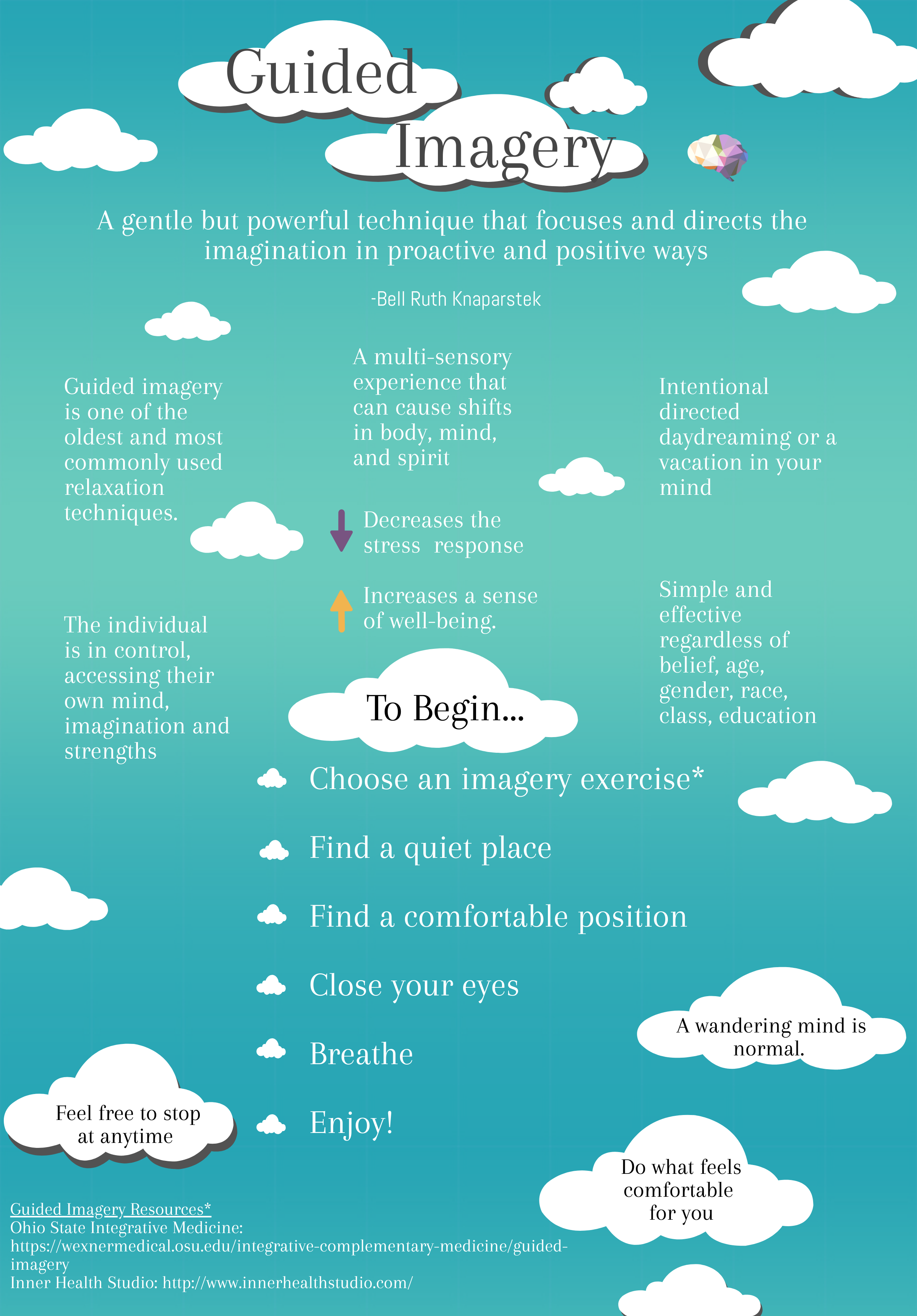Harnessing the Mind: The Science and Benefits of Guided Imagery
FACT CHECKED ✅
Guided imagery is a therapeutic technique that harnesses the power of imagination to promote relaxation, reduce stress, and foster mental and physical well-being. By visualising peaceful scenes or positive outcomes, individuals can influence their emotional states and even physical health. Rooted in ancient practices but backed by modern research, guided imagery offers a low-cost, accessible way to enhance one’s quality of life. This article will explore the science behind guided imagery, its benefits, and practical tips for incorporating it into daily routines for improved health and well-being.
 |
| Guided imagery offers a low-cost, accessible way to enhance one’s quality of life. |
Understanding Guided Imagery
At its core, guided imagery is a form of focused relaxation where individuals are led through a series of visualisations by a therapist, recording, or self-guided practice. These visualisations may involve imagining serene landscapes, positive life events, or even the body's healing processes. Research in psychology and neuroscience has demonstrated that the brain often responds to imagined scenarios similarly to real ones, which explains why guided imagery can have such profound effects.
For instance, when you imagine a calm beach with waves gently lapping against the shore, your brain responds by lowering your heart rate and reducing cortisol levels, the body’s stress hormone. This powerful mind-body connection allows individuals to use guided imagery not just as a mental escape, but as a tool for tangible health improvements.
The Science Behind Guided Imagery
Recent studies have shown that guided imagery can activate the parasympathetic nervous system, which promotes relaxation and healing. By engaging the imagination, individuals can create positive mental environments that can lead to measurable physical changes. A 2019 study found that guided imagery reduced stress and anxiety in participants, helping them to achieve better emotional regulation. The participants reported feeling calmer and more in control after just 20 minutes of guided imagery practice twice daily for 4 weeks.
 |
| (📷slideserve) |
Additionally, guided imagery has been shown to influence physical healing processes. Studies demonstrate that patients who practised guided imagery after surgery experienced faster recovery times and required less pain medication than those who did not. Researchers suggest that imagining the body healing itself can activate the brain’s self-healing mechanisms, which in turn improves immune function and speeds up recovery.
Benefits of Guided Imagery
The benefits of guided imagery are numerous and wide-ranging. The most well-documented effects include reduced stress and anxiety, improved sleep, and enhanced emotional well-being. For individuals experiencing chronic pain, guided imagery has also been found to decrease pain perception, as it enables the mind to "rewire" how it processes pain signals.
In addition to its mental health benefits, guided imagery can enhance athletic performance, support recovery from trauma, and aid in managing chronic illnesses. For athletes, guided imagery can be used to mentally rehearse movements, helping improve focus and physical performance. For trauma survivors, it provides a safe way to navigate and reprocess painful memories, contributing to emotional healing.
Incorporating Guided Imagery into Daily Life
One of the greatest strengths of guided imagery is its accessibility. You don’t need special equipment or formal training to start reaping its benefits. A simple session can last anywhere from 5 to 30 minutes and can be practised alone or with a recorded guide. Consider trying apps that offer guided imagery sessions tailored to specific goals like stress relief or improving focus.
 |
| (📷Ohio State University) |
Guided Imagery and Mental Health
Guided imagery is increasingly being recognised as a valuable tool in mental health care. For individuals with anxiety, depression, or traumatic disorders, this practice provides a way to redirect negative thought patterns and cultivate a sense of calm and safety. The mind’s ability to simulate calming scenarios can help break the cycle of rumination and negative thinking that often accompanies mental health struggles.
Research by the University of Hertfordshire found that guided imagery, when combined with cognitive-behavioural therapy (CBT), significantly reduces symptoms of anxiety and depression in adults with eating disorders, compared to CBT alone. This indicates that integrating guided imagery into traditional therapeutic approaches can amplify the overall effectiveness of treatment.
 |
| Guided imagery can have profound effects. (📷everydayhealth) |
While guided imagery is not a cure-all, it’s a powerful complementary tool that can support mental and physical well-being. Its versatility makes it suitable for a wide range of applications — from managing daily stress to supporting recovery from trauma. As more research continues to validate its benefits, guided imagery is gaining recognition as a science-backed practice that promotes resilience and healing in a holistic way. By integrating guided imagery into our routines, we can cultivate a greater sense of calm, improve emotional regulation, and even influence our physical health. And remember, if you or someone you know is struggling or in crisis, help is available.
⭐⭐⭐


